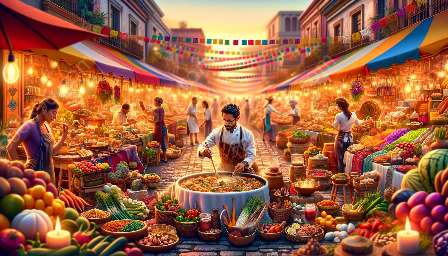Guatemala, a country with a rich cultural blend of Maya, Spanish, and African influences, boasts a diverse cuisine that reflects its unique heritage. The Mayan civilization, which once thrived in the region, has had a profound impact on the culinary traditions of Guatemala. This topic cluster delves into the fascinating interplay between Guatemalan cuisine, its Mayan heritage, and its place within the broader context of Latin American culinary history.
Guatemala's Mayan Culinary Roots
Central to understanding Guatemalan cuisine is recognizing the enduring influence of the Mayan civilization. The ancient Mayans were known for their sophisticated agricultural techniques, including the cultivation of maize (corn), beans, and squash, which formed the cornerstone of their diet. These staple foods remain central to Guatemalan cuisine, as they are used in a variety of traditional dishes and serve as a testament to the enduring connection between modern gastronomy and Mayan culinary practices.
Key Ingredients and Flavor Profiles
The blending of indigenous Mayan ingredients with European and African flavors has given rise to a diverse and vibrant culinary tapestry in Guatemala. Corn, in particular, holds a special place in Guatemalan cuisine and is used in a myriad of dishes, such as tamales, tortillas, and atoles (hot beverages). Additionally, the country's fertile land provides an abundance of fresh fruits, vegetables, and herbs, contributing to the colorful and fresh flavor profiles that define Guatemalan cooking.
Iconic Guatemalan Dishes
Guatemalan cuisine is celebrated for its array of iconic dishes, many of which are deeply rooted in Maya traditions. Pepian, a hearty stew made with meat, vegetables, and a rich, spicy sauce, showcases the complexity of flavors that define Guatemalan cooking. Another beloved dish is Kak'ik, a traditional turkey soup infused with aromatic spices, demonstrating the fusion of indigenous and Spanish culinary techniques.
Latin American Cuisine History
Guatemalan cuisine holds a significant place within the broader narrative of Latin American culinary history. The melding of indigenous, European, and African culinary traditions has produced a rich and diverse tapestry of flavors that characterizes Latin American cuisine as a whole, with Guatemala offering a unique perspective within this regional tableau.
Historical Context and Culinary Fusion
The history of Latin American cuisine is shaped by centuries of cultural exchange, conquest, and migration. The fusion of indigenous ingredients with European cooking techniques, brought over during the colonial era, resulted in a cross-pollination of flavors and culinary customs that continue to influence Latin American cooking today. Guatemala's geographic location and diverse cultural heritage have contributed to the nation's culinary identity within the broader framework of Latin American gastronomy.
Cuisine History
The evolution of Guatemalan cuisine is a testament to the country's historical, social, and geographical context. From the agricultural practices of the ancient Maya to the colonial influences of European settlers, Guatemala's culinary timeline weaves together a story of resilience, adaptation, and the enduring legacy of indigenous traditions. This history is intricately interwoven with the broader narrative of Latin American cuisine, creating a rich tapestry of flavors, techniques, and culinary heritage.
Legacy of Mayan Cuisine
Mayan cuisine, with its emphasis on native ingredients and sustainable farming practices, has left an indelible mark on the culinary landscape of Guatemala. The enduring influence of Mayan cooking techniques and flavor pairings continues to inform modern-day interpretations of traditional dishes, preserving the cultural heritage of the region while adapting to contemporary tastes and preferences.

